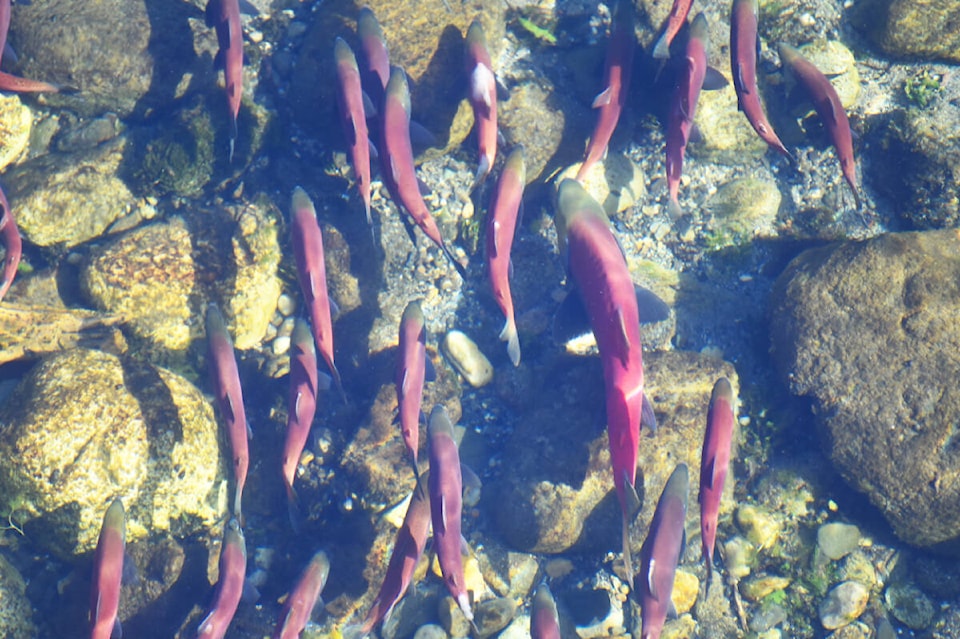Right now, like every spring, hundreds of millions of tiny wild baby sockeye salmon smolts set out on their incredible journey from the Horsefly River and small streams where they were born down to the Pacific Ocean where they will grow into adults.
What an amazing invisible migration.
They swim hundreds of kilometres.
First back to Quesnel River and then down the Fraser River to the nutrient-rich and fertile nursery of the estuary – where the freshwater meets the saltwater.
Only a small percentage survive to return home to rivers of their birth.
Sockeye salmon require a lake nearby to rear in.
Once hatched, juvenile sockeyes will stay in this habitat for up to three years, more than any other salmon.
They then journey out to sea, where they grow rapidly, feeding mainly on zooplankton. They stay in the ocean for one to four years.
Sea-going sockeyes have silver flanks. However, as they return upriver to their spawning grounds, their bodies turn bright red and their heads take on a greenish colour.
Breeding-age males have a distinctive look, developing a humped back and hooked jaws filled with tiny, easily visible teeth. Males and females both die within a few weeks after spawning.
The name sockeye comes from a poor attempt to translate the word suk-kegh from British Columbia’s native Coast Salish language. Suk-kegh means red fish.
The Horsefly River watershed is very special in regards of Sockeye salmon because it is one of the largest sockeye salmon runs in British Columbia.
Today wish all the thousands of tiny baby salmon a great journey back to the ocean and hopefully we will see some of them again in a few years coming back to spawn in the Horsefly River watershed.
The Horsefly River Roundtable will host the Horsefly Salmon Festival in September. This event is to celebrate and inform about the magnificent life cycle of the sockeye salmon and raise awareness of its importance.
READ MORE: Horsefly Salmon Festival celebrates and educates alongside returning salmon
READ MORE: COLUMN: Horsefly River watershed a special place
Do you have a comment about this story? email:
ruth.lloyd@wltribune.com
Like us on Facebook and follow us on Twitter.

